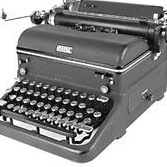I2C or SPI - Which is better?
 PropGuy2
Posts: 365
PropGuy2
Posts: 365
When using the Propeller USB project board which is better / easier to use: I2C or SPI ? I have used both and each has advantages / disadvantages - But I would like to use one or the other to reduce the code size of my project(s) and still get reasonable performance. Does the Propeller chip hardware and / or Spin language favor I2C or SPI ?


Comments
simple "better than" relation that can be defined. I2C allows many devices to share a fixed 2 pin bus, SPI allows
simpler software/hardware support and can go faster, but takes 3+N pins to talk to N devices (and many devices
are "not quite SPI").
SPI is bad in that without pull-up resistors on every CS line you can't guarantee clean power-up behaviour, yet
pull-up resistors are not specified and hardly ever used. I2C specifies pull-up resistors on both SDA and SCL
but not everyone suggests the same values (or even uses them, Parallax). Doing I2C properly can mean 5V
and 3.3V devices can share the same bus in some circumstances, SPI needs level translation.
And to expand on what Mark_T said, many I2C devices are "not quite I2C". For I2C, all devices share the following concepts*:
1. Start and stop signals
2. First byte after a start is an address, with the lowest bit indicating read/write
3. For each slave, if the first byte isn't "my" address then ignore everything until stop.
4. Each byte is acknowledged (either by the slave or master).
*For the normal 7 bit addressing in single master, without all those I2C extensions that I've never used...
After that, it's a free for all. Most devices follow the "register" concept, with a very similar series of bytes to do an operation. I call this the ST I2C standard. But some devices deviate, such as:
1) MS5611 barometer (it doesn't use a register protocol).
2) EEPROMs (it uses a 2 byte address, and 128 byte pages).
3) PCF8523 (it requires a stop condition before the repeated start condition when reading bytes).
I can't speak for SPI, since I haven't really used it that much.
So if you want to read or learn assembler code, start with SPI where the input and output wires are not shared. Then you can read the I2C and learn to deal with all the problems of toggling our i/o pin from output to input. That is also why SPI is simply faster... less to manage.
You are always going to run into the odd device that refuses to pay an I2C royalty and requires SPI. And it might even create its own modified SPI that uses one i/o pin, but does not follow I2C standards. So one needs to learn to be comfortable with both.
I would not state this so bluntly - the propeller has no dedicated i2c pins that I am aware of seeing how any one of the pins work as an i2c protocol.
I also prefer the i2c over SPI, but really depends on a multitude of factors.
However, most use Pins[28..29] for use with EEProms.
So, this is like no extra pins are consumed for I2C devices other than those already used.
Duane J
I'm familiar with I2C, but not SPI so I dug up the following that may help PropGuy2. In fact, on "page" 6 (toward the end), there is a topic "I2C vs SPI: Is There A Winner?"
Enjoy!
http://www.byteparadigm.com/kb/article/AA-00255/0/Introduction-to-SPI-and-IC-protocols.html
SPI is faster but gives no indication that anything is wrong until a whole block of data has been transferred. SPI can be faster because it was designed for a fundamentally different challenge than I2C; SPI was never intended to transmit signals over distance, while I2C was designed to withstand some capacitance in wires taking the signal from the processor controlling your DVD player to the display panel in front.
I2C gives instant warning that something isn't right as the receiving device must ACK (by pulling the signal line down itself) after each byte is transmitted. (Some drivers ignore this but it's good practice to check, and impossible with SPI.) It's already been mentioned that I2C needs only two pins for a bus serving many devices; SPI needs a separate enable pin for each device although the clock and signal pins can serve as a multi-device bus.
Unless you're programming in PASM the speed difference is not a factor; you can't max out either interface in Spin. (It could be a factor if you're using an object written by someone else.) Unless you're implementing an external memory it's unlikely that the speed difference will be a factor even then. I do consider it an advantage that two Prop pins are intended (if not required) for use by I2C; as with the programming serial pins it means that nearly every design ends up with I2C implemented on the EEPROM pins, and once the Prop is finished loading the EEPROM further use is a natural extension.
Kudos to SPI code examples by Beau Schwabe (Parallax) Study this code and you will be a SPI expert in no time.